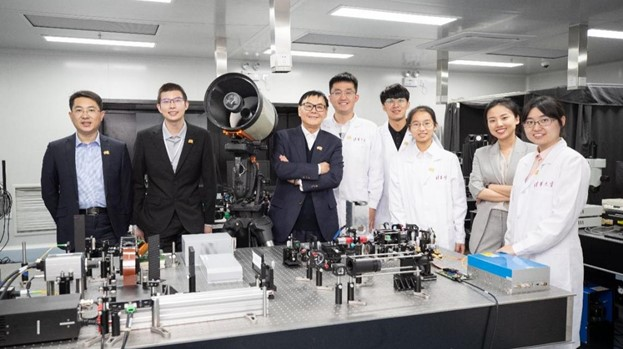"Informed AI News" is an publications aggregation platform, ensuring you only gain the most valuable information, to eliminate information asymmetry and break through the limits of information cocoons. Find out more >>
Tsinghua team develops wide-area wavefront sensing chip, revolutionizing astronomical observation technology.
- summary
- score

Atmospheric turbulence, akin to ghostly apparitions in the air, has long plagued astronomical observations. A team from Tsinghua University has developed the Wide-field Wavefront Computing Sensor Chip (WISE), which achieves real-time detection and prediction of atmospheric turbulence within a range of over 1100 arcseconds. This technology boasts a large field of view, high resolution, and strong robustness, with its sensing range nearly a thousand times greater than traditional methods.
The detection capability of the WISE chip is equivalent to the combined power of hundreds or even thousands of traditional wavefront sensors. It is widely applied in optical systems, enabling extensive detection and prediction of atmospheric turbulence, correcting turbulence disturbances, and achieving efficient collection and precise reconstruction of optical signals over large areas.
In a ground-to-moon observation experiment, WISE achieved real-time detection of approximately 500 spatially coherent turbulent wavefronts within a 1100 arcsecond field of view at a speed of 30Hz. The observational performance of a single chip is equivalent to nearly 1000 traditional wavefront sensors.
The WISE chip has broken through the barriers to wide-field atmospheric turbulence observation, restored the spatially non-uniform distribution of atmospheric turbulence, and revealed the dynamic patterns of atmospheric turbulence. Based on the WISE chip and a spatio-temporal neural network model, high-precision turbulence prediction within a large field of view has been achieved, reducing the predicted wavefront error from 224nm to 109nm, a significant improvement over traditional adaptive optics.
The Imaging and Intelligent Technology Interdisciplinary Team at Tsinghua University continues to innovate in the field of computational imaging, empowering astronomy with computation and opening a new chapter in computational astronomical imaging. In the future, the laboratory will further leverage the advantages of meta-imaging wide-field wavefront sensing to support the next generation of wide-field, high-resolution ground-based optical sky surveys.
| Scores | Value | Explanation |
|---|---|---|
| Objectivity | 7 | 内容客观,全面报道,深入分析。 |
| Social Impact | 4 | 引发科技界关注,影响部分公众意见。 |
| Credibility | 6 | 内容可信,多源验证,无明显疑点。 |
| Potential | 6 | 极高潜力,几乎必然导致重大技术变革。 |
| Practicality | 6 | 极高实用性,已广泛应用并成行业标准。 |
| Entertainment Value | 2 | 内容单调,包含少量娱乐元素。 |